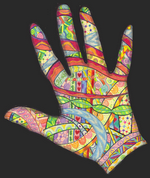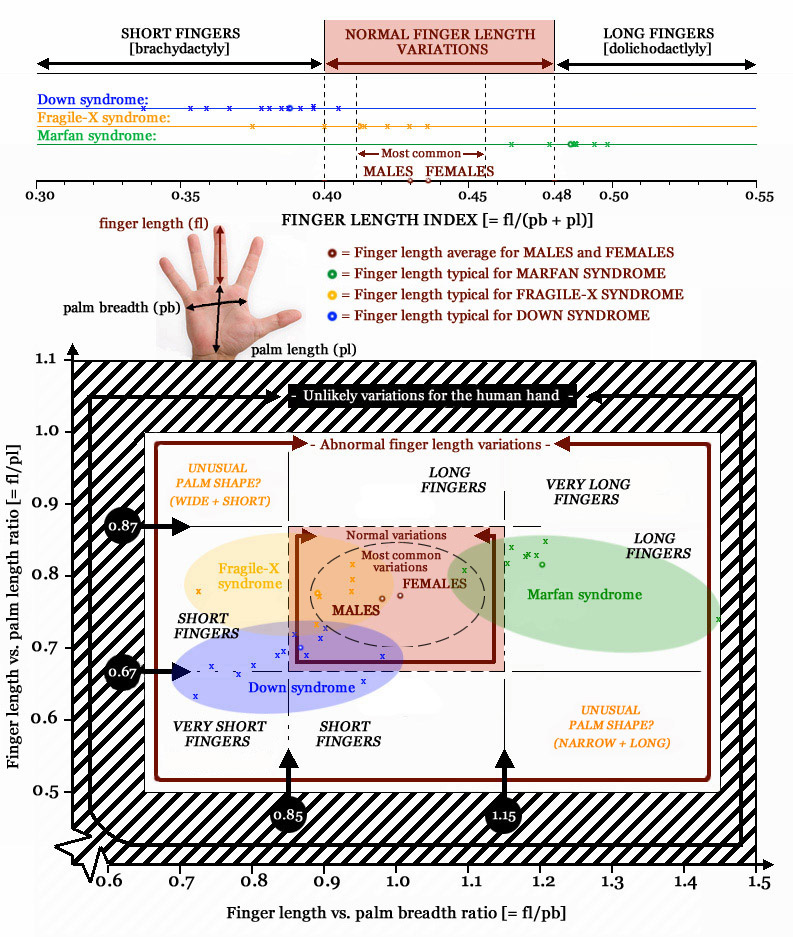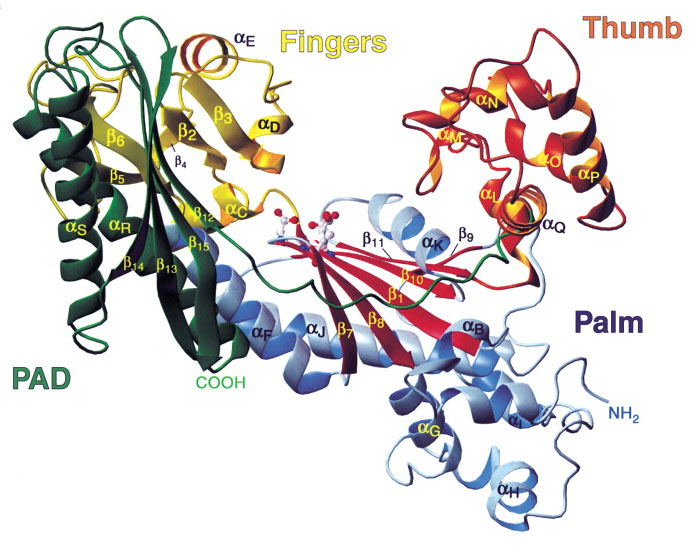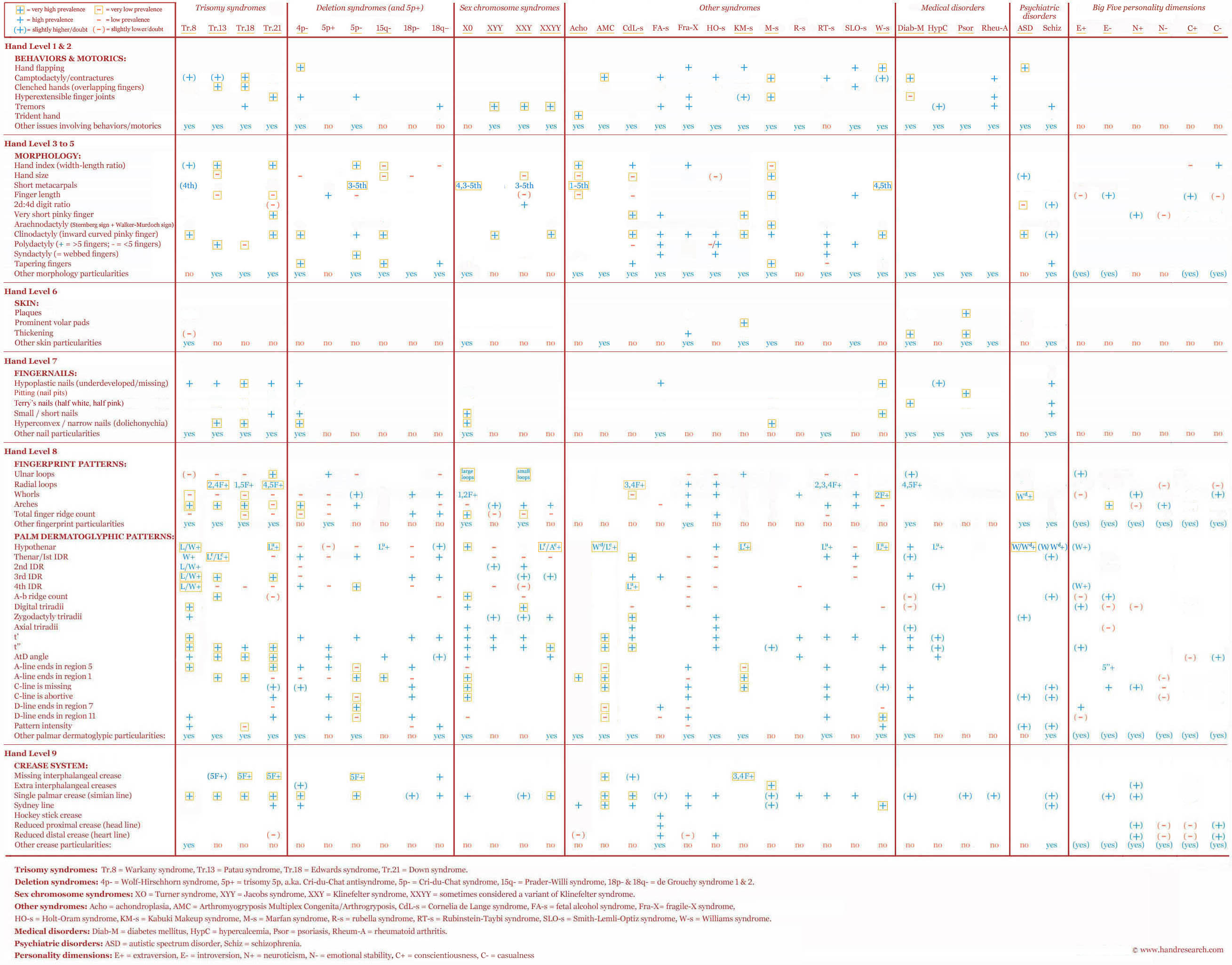None
Most users ever online was 387 on Tue Dec 05, 2023 7:35 pm
The newest registered user is Skylines3
Our users have posted a total of 47490 messages in 4938 subjects
| No user |
• The FREE hand reading services at the Modern Hand Reading Forum are being continued in 2019 with the assistance of Google adsense!

Learn how to read hands according the Modern Hand Reading paradigm & you can use this forum as your palm reading guide!
MARFAN SYNDROME - The language of the hands!
Modern Hand Reading Forum - Discover the language of your hands: palm reading & palmistry forum! :: III - MODERN HAND READING - Various systems for reading hands! :: IIIa - Modern Palmistry: general topics, questions :: IIIf - (Scientific) Multi-Perspective Palm Reading
Page 1 of 2 • 1, 2 
 Re: MARFAN SYNDROME - The language of the hands!
Re: MARFAN SYNDROME - The language of the hands!
I first read the granddaughter, about 11 or 12, who was of normal height and round in shape. I had noticed the tall lady in the crowd in the back ground. The grand daughter had the most unusual 'missing C' I've ever seen and asked to take photos. She was so excited about her reading that she told her grandmother who turned out to be the tall lady. I was excited to compare the dgs and take her photos, too. She has a loop in the same place as the odd ridges were in the granddaughter's palm, which explained somewhat the differences.
I may have read another granddaughter as I asked to take photos of a girl with a comb pattern between the middle and ring fingers, missing C and B is almost not there... it took zooming in on the image on my monitor to see it. I originally thought both C and B were missing. There were similarities between the two girls.
The grandmother has many extra creases and deep ones even on the distal tips, which I don't usually see except for thumb. Radial loops on ring and little on right and radial peacock on ring on the left. She looked healthy just taller than usual and slender.

Patti- Posts : 3912
Join date : 2010-07-24
 Re: MARFAN SYNDROME - The language of the hands!
Re: MARFAN SYNDROME - The language of the hands!
Yes, I agree Patti: I might not be able to help you out here... except by pointing out that what you described for the lady's hands does not include any clue at all that could point in the direction of Marfan syndrome.
Maybe it was just the Lady's slender body height that made you think of Marfan?
 Re: MARFAN SYNDROME - The language of the hands!
Re: MARFAN SYNDROME - The language of the hands!
A 10th hand sign has now been added to the 'Marfan Syndrome Hand Test': the 'hand length sign', see:
http://www.handresearch.com/diagnostics/marfan-syndrome-hand-test.htm
Additionally, the article now presents a list of 8 other hand signs that are significant for recognizing Marfan syndrome.
'Dolichonychia' (= long, narrow fingernails with a ratio above 1.3) is another new sign listed - which is known to be very significant for women who have Marfan syndrome (up to 75% of Marfan women may have it, for men the percentage is above 15% - while in non-Marfan women the percentage is about 2.5%, non-Marfan men: below 1%). Some visual impressions of this nail shape feature are presented here:
http://journals.lww.com/smajournalonline/pages/imagegallery.aspx?year=2004&issue=04000&article=00011
PS. Earlier today I have just reveiced some early feedback from 2 people who have Marfan syndrome - both passed the test! (While one of these persons had not qualified for the first version of the hand test that did not include the 'hand length sign' and the 'arm span sign')

 Re: MARFAN SYNDROME - The language of the hands!
Re: MARFAN SYNDROME - The language of the hands!
Just posted at the Marfan syndrome facebook forum:

https://www.facebook.com/groups/2204143971/permalink/10150978224708972/
"A QUICK SUMMARY OF THE FEEDBACK ON THE MARFAN SYNDROME HAND TEST SO FAR:
The hand test works pretty well for those who have Marfan syndrome: 6 out of 8 Marfan people directly passed the test (all with scores 24 or higher); 2 Marfan people arrived in the 'borderline category' (11 points and 16 points), but an analyses of the scores involved indicates that scoring points for the 'arm span' (or the former 1.03 ratio criterium) is a key-factor: one of these 2 Marfan people passed the 1.05 ratio and the other person does qualify for the 1.03 ratio (and has body height exceeding family members).
NOTICE: So far two EDS people have performed the hand test as well: both score in the 'borderline category' (9 points and 10 points), however both do not qualify for the 'arm span sign' and both also do not have excessive body height.
Finally one person who was diagnosed for LDS (type 2b - previously known as Marfan syndrome type 2) did the revised hand test and passed it as well - however, interestingly, this person was diagnosed as Marfan syndrome (before LDS was discovered in 2006).
Therefore so far all feedback indicates that the hand test does discriminate Marfan syndrome [MFS] from Ehler-Denos syndrom [EDS].
Regarding Loeys-Dietz syndrome, I am confident that in far most cases the hand test will not result in a positive score for Marfan syndrome, however there is a considerable chance that a significant percentage of the people who have the LDS-type 2b variant might pass the Marfan syndrome hand test (which implicates that the LDS-type 2b group has a significant risk for getting a 'false positive score' on this hand test).
I think this is pretty fascinating."
 Re: MARFAN SYNDROME - The language of the hands!
Re: MARFAN SYNDROME - The language of the hands!
New update:
14 out 17 Marfan people passed the hand-test (the other 3 Marfan people scored in the 'border line' category), see:
https://www.facebook.com/groups/2204143971/permalink/10150978224708972/
PS. Still only 1 single 'false positive' (= the person who has Loeys-Dietz syndrome, which used to be known as 'Marfan syndrome - type 2')
 Re: MARFAN SYNDROME - The language of the hands!
Re: MARFAN SYNDROME - The language of the hands!
... One more aspect about the hand in Marfan syndrome:
In the literature about Marfan syndrome 'spider fingers' (a.k.a. arachnodactly - which means: long slender fingers) are described as a key-feature in Marfan syndrome.
However, my study of the hand in Marfan syndrome made me realize that this typical feature has not been described very well - because so far there has been no 'hard' criteria for discriminating arachnodactyly from normal fingers.
The picture below describes precisely how to recognize 'abnormal long fingers' (technically scientists call it 'dolichodactyly') in Marfan syndrome. Because in Marfan syndrome finger length only presents an atypical feature when finger length is compared to the breadth (palm) of the palm... but not when finger length is compared to the length of the palm!
PS. I should add here that in Marfan syndrome the ratio between finger length and palm length will usually turn out to be slightly higher than the international average for men and women (see the picture below: 7 out 8 Marfan hands score above average on the 'finger length / palm length' dimension - but still within the 'normal range'... only on the 'finger length / palm breadth' dimension the scores are beyond the 'normal range').
EDIT: Picture has now been updated with the 'finger length index': 6 out of 8 Marfan hands have abnormally long fingers (= dolichodactyly).

Last edited by Martijn (admin) on Fri Jul 13, 2012 10:34 pm; edited 2 times in total
 Re: MARFAN SYNDROME - The language of the hands!
Re: MARFAN SYNDROME - The language of the hands!
I can't find any reference to it on the internet (apart from where you have written it).
Closest word I found was oligodactyly (fewer than 5 fingers or toes on a hand or foot).
 Re: MARFAN SYNDROME - The language of the hands!
Re: MARFAN SYNDROME - The language of the hands!
Thanks Lynn... I somewhere lost the first letter of the word, I have corrected the error - the word is now correctly written as: 'dolichodactyly'.

 Re: MARFAN SYNDROME - The language of the hands!
Re: MARFAN SYNDROME - The language of the hands!
How would you classify these? I have close ups of palms and fingers if you need to double check anything.

p.s.: I realize you can't get actual measurements, but I thought you would be able to get ratios.

Patti- Posts : 3912
Join date : 2010-07-24
 Re: MARFAN SYNDROME - The language of the hands!
Re: MARFAN SYNDROME - The language of the hands!
Hi Patti,
The photo gives me the impression that this person's finger length is clearly above the international average (both hands), with the right hand (displayed at the left) very close the category (abnormal) 'long fingers' in the perspective of palm length.
However, I should add here that due to the camera position I expect that the fingers are actually slightly shorter (and the palm slightly longer) than seen in this photo.
PS. Just wondering why you posted this photo in the Marfan topic... can this person any how be connected with Marfan syndrome?
 Re: MARFAN SYNDROME - The language of the hands!
Re: MARFAN SYNDROME - The language of the hands!
In addition to her unusual height, taller than the men at the event, her fingers have extra ceases, which is another feature you have listed.
She also has other not so common features that can be found with syndromes such as radial loops on the ring fingers and at least one Sydney line, if not two.
I think her left hand is pretty close to being accurately viewed as you see it. If anything, the middle finger might be a little longer as it may be ever so slightly flexed.

Patti- Posts : 3912
Join date : 2010-07-24
 Re: MARFAN SYNDROME - The language of the hands!
Re: MARFAN SYNDROME - The language of the hands!
Hi Patti,
Thank you for explaining.
I think the hands of this woman actually present a few contra-indications regarding Marfan syndrome, e.g. her wrists are above average wide (see especially her left wrist); and though her finger length is slightly long, it's not outside the normal range and I am not sure that the width of her fingers can be described as slender (I would say normal relative to finger length).
By the way, I don't see the head lines (clearly) reaching the side of the palm - so I would prefer to speak of long head lines, not Sydney lines.
And regarding tall body length, there is an additional requirement before it can be associated with Marfan syndrome: body height is required to exceed the body height of family members - including the males. So, tall body height compared to other males is not a key-feature in Marfan syndrome.
Patti, I am not sure that she would score any points at all on the Marfan syndrome hand test. The photo nor your description do not provide a basis to assume that she would for sure score points.
Beyond the minor feature that you mentioned (extra interphalangeal crease), I am not sure that I can add much more to the list of hand features that could point in the direction of Marfan syndrome. Only her right hand does appear to have a long finger length index - possibly even high enough to classify for dolichodactyly according this index (though I think we sort of agree that her right hand fingers likely may look a little longer on the photo). But I think these features are sort of neutralized by the contra-indicators that I mentioned above.
Therefore, based on your info so far, I think this woman very likely does not have Marfan syndrome. Thank you for your efforts to discuss the details!
 Re: MARFAN SYNDROME - The language of the hands!
Re: MARFAN SYNDROME - The language of the hands!

I didn't see your information about the size of the wrists, I'll go back and check.
The head line in her right hand definitely goes to the edge of her palm. Clearer in my higher quality close ups of the palm. The only question as to the left hand is the fragmented sections that take it to the edge.
Well, anyway.. thanks for taking a look. Seems then like there's not much reason to bother to look for Marfan's in the general population by those of us reading hands in the public.

Patti- Posts : 3912
Join date : 2010-07-24
 Re: MARFAN SYNDROME - The language of the hands!
Re: MARFAN SYNDROME - The language of the hands!
Patti... sorry, so far I had not mentioned anything specific related to the wrist (beyond the 'wrist sign' that is included in the Marfan syndrome hand test).
The things is, what is very likely essential here is that Marfan syndrome is typically featured with a tendency for the limbs to manifest with long + narrow dimensions (technically this phenomenon is known as 'dolichostenomelia'). I hope this explains enough why I started pointing out to the size of wrist (I think it is probably wider than the wrist size of the average hand).
Regarding your final comment, we should be aware here that Marfan syndrome is found in only about 1 in 5000 persons. So it is probably wise to focus on the most important key-aspects only (extra-phalangeal crease & sydney lines would become quite irrelevant regarding Marfan syndrome when no key-aspects for Marfan syndrome are present at all). Just like a simian line would become irrelevant for Down syndrome in a person who has a 'water hand shape'.
As soon as you start understanding the key-aspects regarding the hand in Marfan syndrome (see the 10 hand features included in the Marfan syndrome hand test) it should become relatively easy to recognize Marfan syndrome from the hand (and to spot contra-indicators, etc.). Though it might take first also a study of a few Marfan hands by detail.
So, if you would meet that woman again... I would recommend to start use it as a nice opportunity to see if she can do the 'thumb sign' and/or 'wrist sign', plus the other sign related to skin flexibility & mobility.
(Again, I would not be surprized at all if she would not qualify for any of those signs (because of the contra-indicators that I mentioned)
I hope this now makes sense?
PS. I have just update the picture: the picture now describes much more clearly how to use finger length for recognizing Marfan syndrome. Basically, a 'finger length index' above 0.48 is required (notice: you assumed that the finger length for the left hand of the woman is probably very close to it's real length - I found a 'finger length index' score of 0.452 for that hand: clearly above average... but quite far away from the 'dolichodactyly' criterium). The right hand is probably much more close to meeting the criterium, but since the fingers probably appear as too long on the photo... it is very hard to say how close the left 3th finger approaches the criterium.
 Re: MARFAN SYNDROME - The language of the hands!
Re: MARFAN SYNDROME - The language of the hands!
Martijn (admin) wrote:
Hello Felicity,
That's a nice question!
I did a little bit of litererature research on that, and it is interesting to see that these people generally are able to live a happy life, with normal levels of the traits depression and anxiety; but they do tend to develop an introverted personality.
See the quotes from two studies below:
Psychosocial adaptation in adolescents and young adults with Marfan syndrome: an exploratory study.
http://jmg.bmj.com/content/35/5/405.abstract
"Most patients emphasised the need for accurate information about the illness immediately after knowing the diagnosis and all found psychological support helpful. Depression and anxiety levels were higher in the female than in the male group, without being significantly different from the normal population. Nevertheless, most patients have come to terms with their disease and consider themselves happy most of the time."
Determinants of Quality of Life in Marfan Syndrome
http://psy.psychiatryonline.org/cgi/content/full/49/3/243
"In line with these arguments, we found a number of studies indicating that MFS imposes a burden on daily life; in particular, on school attendance; on work opportunities and social behavior; and on the development of an introverted personality, with associated defensive psychological traits, such as denial and isolation."
Obviously... and introverted personality is also associated with a water-hand. But I also think that the 'water hand' is the most vulnerable hand type of all, and generally they tend to be more sensitive for negative emotions (including: depression, anxiety).
But I also think that people with Marfan syndrome tend to have a more 'happy' personality type than one can generally observe in the water hand.
Hopefully, this answers your excellent question...
... Above I mentioned that studies have pointed out that Marfan people tend 'to develop an introverted personality'.
Interestingly, my recent Extraversion-study (not related to Marfan syndrome) has pointed out that introverts tend to have hands characterised by e.g.: longer fingers and a narrower palm.
This creates a clear pattern of similarities: introverts & Marfan people have similar-like hand characteristics.
Pretty fascinating... the combination of both examples appears clear confirming evidence that Sheldon's ectomorph somatotype indeed correlates with at least some personality traits (Sheldon mentioned for the ectomorph type: inhibited, introverted, hypersensitive to pain, and secretive).

 Re: MARFAN SYNDROME - The language of the hands!
Re: MARFAN SYNDROME - The language of the hands!

Arachnodactyly in Marfan syndrome can be measured through the so-called 'metacarpal index' for the hand; two methods are described in this article:
http://www.e-radiography.net/radpath/a/arachnodactyly.htm
Quote from the article:
"When arachnodactyly is subtle, the metacarpal index can be determined by dividing the length of each of the last four metacarpals by the width of its midpoint and averaging the values. Marfan's patients are often grater than 8.4, while normals are less than 8."
 Re: MARFAN SYNDROME - The language of the hands!
Re: MARFAN SYNDROME - The language of the hands!

The following quick summary describes the most significant hand signs in Marfan syndrome (taken from the article presented at the bottom of this post):
"• [22]: M-s = Marfan syndrome:
Summary of the most significant hand signs in Marfan syndrome:
- Hand level 2: camptodactly (contractures in the fingers) & hyperextensible finger joints are often present.
- Hand level 3: long, large hands are typical.
- Hand level 5: arachnodactyly - a.k.a. spider-like fingers - is very often present, manifesting as a positive 'thumb sign' (= Steinberg sign) and/or a positive 'wrist sign' (= Walker-Murdoch sign); finger length is typically long relative to palm with (+ often also slightly long relative to palm length); tapering fingers are also often present.
- Hand level 7: hyperconvex / narrow nails [dolichonychia] is often present.
- Hand level 9: extra interphalangeal creases may be present."
More summaries for 36+ other conditions:
Decoding the language of the hand: how to find 36 conditions with just 54 major hand signs!!
(The table below provides an easy opportunity to find the most significant hand sign combinations for a specific condition; the table also represents the foundation of this masterclass mini-course in scientific hand reading)

Page 1 of 2 • 1, 2 
 Similar topics
Similar topics» DOWN SYNDROME - The language of the hands!
» SCHIZOPHRENIA - The language of the hands!
» BLOG REPORT: "Little hands" (Down's syndrome)
» JEREMY BEADLE'S HANDS - King of jokes had a small little baby hand! (Poland syndrome)
Modern Hand Reading Forum - Discover the language of your hands: palm reading & palmistry forum! :: III - MODERN HAND READING - Various systems for reading hands! :: IIIa - Modern Palmistry: general topics, questions :: IIIf - (Scientific) Multi-Perspective Palm Reading






» Can anyone read it for me?
» Square on Marriage line
» Cross in mount Jupiter
» clinodactyly: top phalanges bending towards Mercury finger
» Can anybody please read this hand
» Nisha Ghai
» Absolutely non-sense career till now
» Fate Destiny Line -
» VIII - Palmistry books TOP 100 - listed by 'Amazon Sales Rank'!
» Stewart Culin - Palmistry in China and Japan
» Herbert Giles - Palmistry in China
» life line forks
» Astro-Palmistry files
» unique lines on Saturn mount